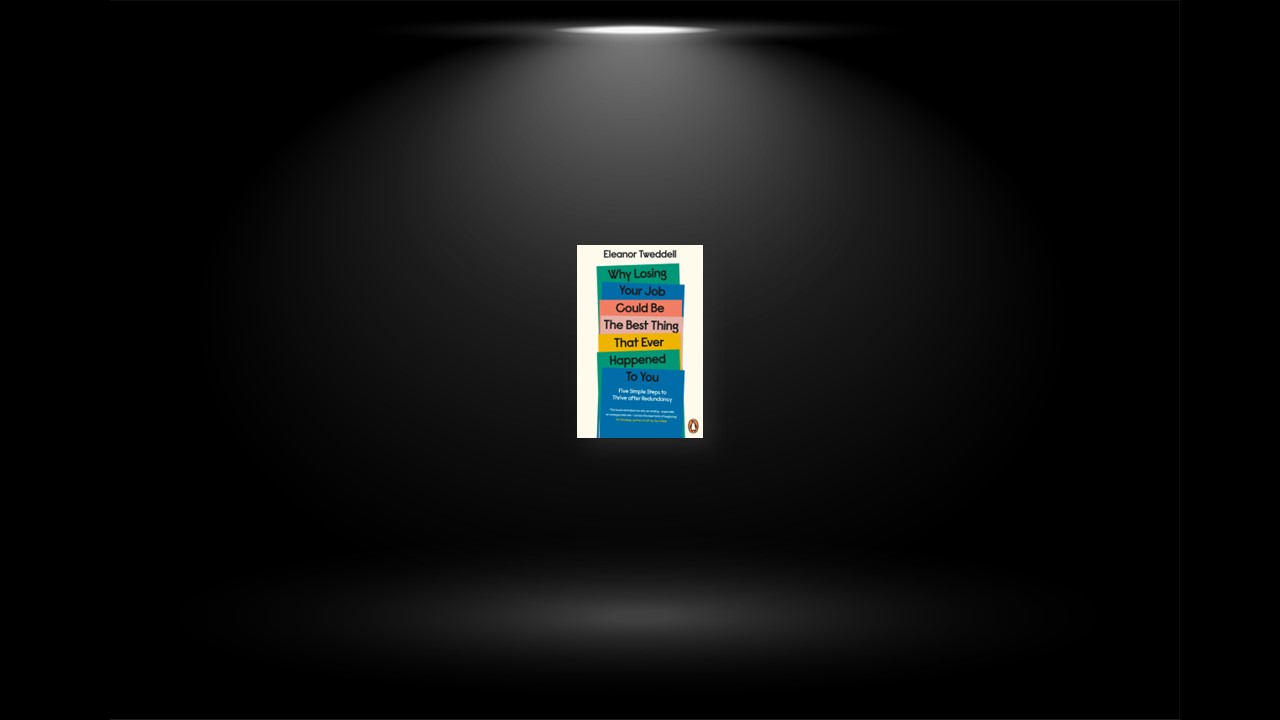Create Your Line to Take
Telling people that you’ve been made redundant can be difficult. It can feel embarrassing, like admitting failure. Most people don’t know the right way to respond, which can lead to some awkwardness. If you haven’t worked on the story you are telling yourself, the act of telling the story to others will begin to hurt, and by ‘story’ I mean the narrative you’re happy to share with people. Whether that is, ‘Yes, I’m devastated. I don’t know what to do, I’m still processing it,’ or, ‘I can’t wait to use my redundancy package to go on a very long holiday,’ or anything in between, now is a good time to activate your PR plan, your pre-prepared response or, as I like to call it, your Line to Take (LTT). Not only does it matter what story you are proactively telling, it also matters how you are reacting. As you start to tell people you’ve been made redundant you are going to be asked questions. If you think about how you are going to answer them, your answers will help you move on quicker as well as help confirm the story you are telling yourself. You won’t waste energy worrying about what to say or dealing with emotions afterwards.
Exit with Grace
It’s not about not causing trouble or sticking up for yourself but rather being aware that how you leave might impact you later. You don’t know when or where you might meet ex-colleagues again. If you are going to raise issues, ask for further conversations, do it, but do it with grace. Leaving with bad feeling will stay with you a lot longer than any of the people who remain at the organization.
It’s a really thin line between sticking up for yourself versus causing trouble versus keeping quiet. There is no right advice here. You must do what you think is right at the time. The key is not to make decisions, and especially not to act on them, from an emotional state. If you feel you are reacting, walk away, pause, delay the meeting. Compose and be proactive. I know there are many examples of unfair dismissals, and dubious reasons for your redundancy but you must be clear what you want to get out of appealing. Be clear on why you want to use energy fighting rather than using energy to move on.
Where to Search for a New Beginning
After a good time wallowing, it’s time to reset. Your battery has now been charged. It’s time to release your energy and see where hope is going to take you. Did you have any ideas while you were wallowing? Are you full of hope, but not sure where to start? Well, start at the easy place. You’ve already got some clues. The job you have enjoyed (or endured) for the last few years may be disappearing, it may feel out of your hands, but what happens next has you firmly in the driving seat. You have more options than you might know right now.
Search for clues in your hobbies. Do you have a hobby, an interest, a passion? Do you have hidden talents, or talents you already share for free, for fun, for entertainment? What are you really good at? Do you do something that others also need to do, but find hard? What can you help others do?
Be inspired by T-shaped thinking. A concept created in Silicon Valley that helps people use their hobbies and skills to broaden their personal growth. Could your passion for flower arranging influence your next career choice? Could it inspire some further training?
Use what you have learned from the job you’ve just left. What did you bring to your last role? Were you a problem solver? Did you help people? Did you drive sales? How can you bring this experience to your next role? This isn’t about the job description, it’s about what you did, how you did it, where you got your energy.
Start collecting your ideas in small steps; make notes, start a blog, start writing on Medium, post your ideas on LinkedIn. Ask your friends and former colleagues to help you, collect feedback. Volunteer your time. Test your learnings. Attend conferences.
Analysis Paralysis
So you might be getting clear on your why, but the whats … the whats are many. What do you want to do? So many ideas, so many decisions to make – or are there?
This is when you overthink your decisions to such an extent that you never move on or take action. You become so overwhelmed you do nothing. We don’t want that. You have come so far. To give up before you’ve even started is not a possibility. There is a happy medium between using your clear-headed thinking and reaching analysis paralysis.
Here are some tips to get you slowly moving in the right direction:
- Be clear on your priority list. You might want to stick it to a wall where you can see it every day. It will keep your mind focused on what you’re working towards.
- Don’t force things. If you’re doing something for the sake of it or because you think you should, pause. This is more than likely a waste of energy that could be better spent elsewhere.
- Keep asking questions. Follow up on leads. Reach out to people on LinkedIn.
- Limit yourself to a few actions a day.
- Be intentional about why you are doing things but do them without expectation. Just let things flow.
Right now it’s about keeping things simple. You don’t have to have all the answers, you don’t need everything all worked out, you don’t require a detailed plan of action. Tune into what your intuition tells you to do and move away from overthinking and overanalysing.
Don’t Ask for Feedback
It’s tempting to ask for feedback and get people’s opinions to help you progress. Some feedback is useful, some feedback is not so useful. Feedback is not always a gift. It’s someone’s opinion. That’s all it is. Feedback is the noise when the speakers squeal. It hurts your ears. If you want advice from people you admire or value, then that’s a whole different ball game. So rather than ‘I’m not getting any results from my CV, any feedback?’, reframe the question – ‘I’m aiming for roles as a sales manager, do you have any advice on how you’d position yourself?’
You’ll feel better about asking. You’ll get better quality advice and shared experience that you can then analyse and decide whether it will work for you. When people ask for feedback they end up with a list of things they feel they must improve. That’s the wrong way of looking at it. It’s just a list of opinions. Opinions that might say more about them than about you. When people share their views it often has everything to do with how they would feel or react and nothing to do with your position. You need to view ‘feedback’ opinions through your own lens of what you want to get out of something. The best feedback is not feedback, it is advice.
Watching what others do, and following role models, then lining it up against your behaviours and actions can be far more powerful. Feedback can start to set you back, not propel you forward, so think carefully about how to get connection and advice from people.
Bouncebackability
You will have setbacks and failures and ‘Noes’, and small victories and glorious ‘Yeses’. You know when the answer was 42 in The Hitchhiker’s Guide to the Galaxy, but no one knew what it meant? Well, it means how many times you will get a no before you get a yes … forty-two. So how are you going to handle forty-two ‘Noes’? Dealing with rejection will teach you so much about the sort of person you are. It is worth working on how we respond to setbacks, and training ourselves to improve our response to build our resilience.
Work on your ‘what ifs’. When something happens to you, do you instantly worry? Is your mind full of negative ‘what ifs’ or positive curiosity? Experts say that on average we have 60,000 thoughts per day. Of those, 95 per cent repeat each day and, on average, 80 per cent of repeated ideas are negative. Our ‘what ifs’ are mostly negative. However, what if our ‘what ifs’ become mostly positive? Imagine that. In Amber Rae’s book Choose Wonder Over Worry, she wonders about possibilities, opportunities, time to think. The skill of ‘wonder over worry’ is known as cognitive agility. Cognitive agility is the art and science of knowing that you can choose whether to operate in default mode (which might be negative and defensive) or adjust to make better choices. Next time you worry, be more curious about what you are worrying about. Is it real? Is there an alternative? Can you choose just to let go of the worry?
Treat failure as just one step closer to success. Resilient people treat problems as a learning process. We have talked about stepping out of your comfort zone and into stretch. In your stretch zone, you need to be prepared to fail as part of the process. When you learn from mistakes you get closer to your goals. Every time you say, ‘Well, I won’t do that again,’ you are building your resilience and strengthening your response towards a more positive outcome.
Train yourself to enjoy the stretch zone, and not fear the stress zone. What lengths do you go to to avoid perceived discomfort? If you have ever tried yoga you can relate to the feeling of being twisted into a pose that is, at first, very uncomfortable. However, when you lean into the pose, breathe into it rather than resist it, a sense of stillness and calm happens. If you let yourself enter your stretch zone, it will feel more comfortable over time. The training isn’t about avoiding stretch, it’s about embracing it. And if stretch turns into stress, you do the same. Lean into it. Think about the cause of the thoughts and tension and think about what you can learn about it. If you fear the stress zone so much, you may end up creating it. Rethink how you feel about what is happening to you. Observe how your body and mind feel and adjust how you are thinking about it. If you feel like shouting out ‘Why me?’ then that is the moment to think ‘What next?’ instead … begin to think about your ‘other door’.
So, What are You Going to Do?
If you do just one thing now write down – in big words – your ideal tomorrow scenario. If it all were to come together and your ideal scenario were to exist tomorrow – what would it look like? OK the intention is set. You are on your way.
Wherever you are going next, remember that you are in control, it’s all there for you to take. You’ve got this. Own it. You aren’t alone. Keep your hope a force for change, keep your ideas coming to solve problems, and keep taking action.
You are about to make losing your job the best thing that has ever happened to you.


